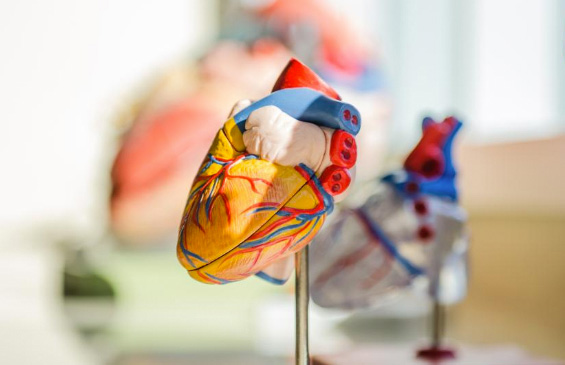
As swimsuit weather approaches, you can’t walk past a magazine rack without seeing at least five headlines focused on body fat. But where are the headlines about blood fat?
High cholesterol — a type of fat in your blood and cells — is easier to ignore than high body fat. It doesn’t reveal itself the way extra body fat does when you step on the scale or try to zip up a pair of pants that are suddenly too small. That’s why it’s so dangerous. High levels of cholesterol can build up inside your arteries with no outward signs until, one day, an artery becomes so clogged that your blood can’t get through. That’s when the very first symptom — chest pain or a heart attack — may finally appear.
High cholesterol is so common in the United States that it may seem like no big deal, but it should be headline news. According to the Centers for Disease Control and Prevention:
-
- High cholesterol doubles the risk of developing heart disease, the No. 1 cause of death for both men and women in the United States.
-
- Nearly one in three adults in the U.S. has high cholesterol.
- Fewer than one in three people with high cholesterol has it under control.
When we talk about “high cholesterol,” by the way, we’re referring to “bad” LDL cholesterol, which can clog up your arteries — not the “good” HDL cholesterol, which helps sweep out excess LDL.
Why is high cholesterol so common in our country? A lot of it has to do with our lifestyle and the way we eat, but a lack of information also contributes. If blood fat grabbed as many headlines as body fat does, high cholesterol would be harder to ignore, people would be better equipped to prevent or control it, and many would live longer lives. Body fat is important, too — no question. But let’s give blood fat some equal time.
Here are some cholesterol myths and facts that should be top news:
MYTH: You don’t need to have your cholesterol checked until middle age.
REALITY: Even children can have high cholesterol. Testing should begin at age 20 and continue once every five years, or more often if levels are high. Seeing your doctor for regular cholesterol testing is an important way to watch for heart risks so you can take action to minimize them — the sooner, the better.
MYTH: Thin people don’t have to worry about high cholesterol.
REALITY: Although it’s more common in overweight people, even thin people can develop high cholesterol and should be tested regularly. Diet and weight play major roles, but smoking, diabetes and hereditary factors also increase the risk of developing high cholesterol, no matter what your body type.
MYTH: Avoiding food with cholesterol in it is the best way to lower cholesterol.
REALITY: Dietary cholesterol is no longer believed to be a major cause of high blood cholesterol — in fact, many “low-cholesterol” foods contain high levels of trans fat and saturated fat, which contribute much more to raising blood cholesterol. Here are the best ways to keep your cholesterol and heart risks low:
-
- Maintain a healthy weight and waistline.
-
- Exercise for 30 to 60 minutes on most days of the week.
-
- Don’t smoke.
-
- Eat heart-healthy omega-3 fats from foods like raw nuts, ground flaxseeds and oil-rich fish, instead of saturated animal fats and partially hydrogenated oils.
- Eat mostly high-fiber plant foods, such as oats and oat bran, beans, lentils, fruits, leafy greens and crunchy vegetables — see more tips and recipes
If your heart risks are elevated and these changes aren’t enough to control your cholesterol, your doctor may prescribe medication to help. Continue these healthy changes anyway — they’ll help you keep your dosage as low as possible and will improve your heart health in other ways, which is all good news.
Dr. Chhibber sees patients at our Beaverton location.


